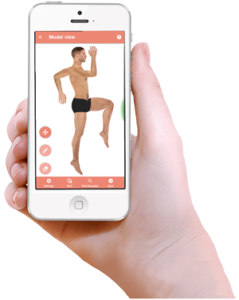
About 2500 years ago a little-known contemporary of Gautama Buddha called Shivago Komaparaj developed a form of healing from his meditative and healing experiences that were based on the principles of yogic meridians. As Buddhism spread to South East Asia, so did these healing principles.
Thai Yoga Massage is a part of larger body of knowledge called TTM (Thai Traditional Medicine). TTM and TYM by default are Buddhist healing arts and, therefore, borrow heavily from Buddhist yogic understanding. There might be some essential elements of TYM that have come from Buddhist India like the SEN but in general, it is today acknowledged that TYM is a Thai healing art. It is an amalgamation of India Yogic healing, Chinese medicine, and local tribal wisdom. Nevertheless, all TYM practitioners pay homage of Father Jivaka to bless them with the knowledge of TYM due to his association with Gautama Buddha.
It is also said that Acharya Jivaka excelled in both herbal medicine and expertise of Nadis (energy/SEN lines). Therefore, the development of Tibetan herbal medicine is also often attributed to him. Over centuries, Buddhism spread to South East Asia. While in India, it was in decline. Eventually, Buddhism lost out to mainstream orthodox Hinduism in India and was slowly pushed out of its country of origin only to be preserved and nurtured in South East Asia, Tibet, China and Sri Lanka.
In South East Asia, Acharya Jivaka’s understanding of yogic meridians blended with Chinese medicine, and local tribal customs to become Thai Yoga Massage. Due to various changing political alignments over the centuries dynasties have tried to standardize the practice of TYM as a way to establish political control. So what we have today is a small and consistent body of knowledge now known as TYM.
Also, in the 18th century, Raiders from Burma destroyed almost all of the medical texts. Only two manuscripts survived the onslaught. Finally, the Thai King RAMA III (1824-1851 A.D.), installed the remaining knowledge in plaques inscribed with medical texts at the Wat Pho monastery in Bangkok. There are 60 plaques inscribed, 30 each for the front and back of the human body. Therapeutic points and energy pathways known as Sen were engraved, and the explanations were carved on the walls next to the plaques.
During the Vietnam War, the Americans landed in South East Asia and experienced TYM. To work their way around not having to pronounce the local word, they started calling this form of therapy as Thai Massage. The Thai themselves used to call it Nuad Bo Rarn.
Broadly Nuad Bo Rarn is divided into two styles one more popular in South Thailand which is based on intense pressure on the main acupressure points while the other style is from northern Thailand specifically from Chiang Mai, which is known more for its work on energy lines and assisted yoga stretches.



